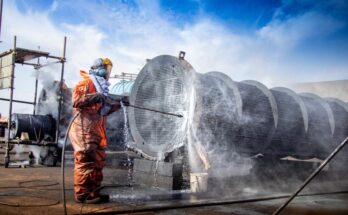Regular maintenance of heavy machinery is essential to minimize downtime, extend equipment lifespan, and reduce long-term costs. Whether you manage a construction site or lead a manufacturing operation, staying proactive with maintenance keeps your equipment running efficiently and helps avoid costly repairs. This checklist will guide you through a quick maintenance checklist for heavy machinery.
Check and Change Fluids
Fluids are the lifeblood of any heavy machinery, and monitoring them is one of the simplest ways to avoid major breakdowns. Check oil levels, hydraulic fluids, and coolant regularly to keep everything functioning smoothly. Remember to test for contamination or discoloration, which can indicate internal issues. With automotive oils advancing significantly over the years, newer formulations offer better stability, increased lubrication, and enhanced wear protection, making it crucial to select the right one for your equipment. Don’t forget to refill or replace fluids as needed to maintain optimal performance.
Inspect and Replace Filters
Filters help keep your machinery free of dirt, debris, and contaminants that can damage internal components. Over time, filters in systems like air, fuel, and hydraulics can get clogged and reduce efficiency. Regularly inspect these filters to determine their condition and replace them as needed. Clean filters ensure smooth operation and minimize the risk of wear and tear caused by contamination within the system.
Examine Belts and Hoses
Belts and hoses take on significant stress and are prone to wear, cracking, and other damage. A damaged belt can snap, leading to critical failures, while a leaking hose can cause hydraulic or coolant loss. Inspect belts and hoses for any visible cracks, bulges, or signs of wear, and confirm that all connections are secure. Acting quickly to replace worn belts or faulty hoses can save you from unexpected downtime and expensive repairs.
Lubricate Moving Parts
Moving parts, like bearings and joints, are constantly under pressure, and a lack of proper lubrication can cause friction and overheating. Always apply the appropriate lubricants to every moving part to reduce wear and improve efficiency. Use manufacturer-recommended lubricants and check for dry or squeaky components that might need extra attention. Regular lubrication will keep machinery functioning smoothly and safely.
Inspect Electrical Components
Reliable electrical systems are essential to your equipment’s performance, so inspecting these components should be part of your routine. Look over wiring, switches, and connections for signs of damage or loose connections. A malfunctioning electrical system can lead to sudden equipment failure or safety concerns. Taking the time to inspect and resolve electrical issues thoroughly ensures better long-term reliability for your heavy machinery.
Following a consistent heavy machinery maintenance routine helps reduce the likelihood of unexpected problems, keeps your equipment operating at peak efficiency, and ultimately increases its lifespan. Staying on top of repairs and replacements saves time, money, and frustrations associated with downtime. Make these checks part of your routine today to stay ahead of potential issues and keep your operations running as efficiently as possible.



